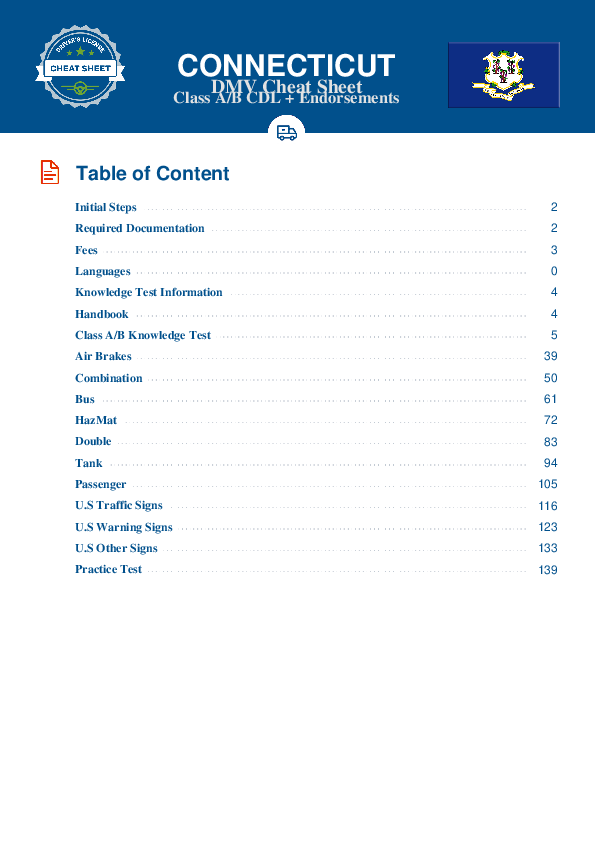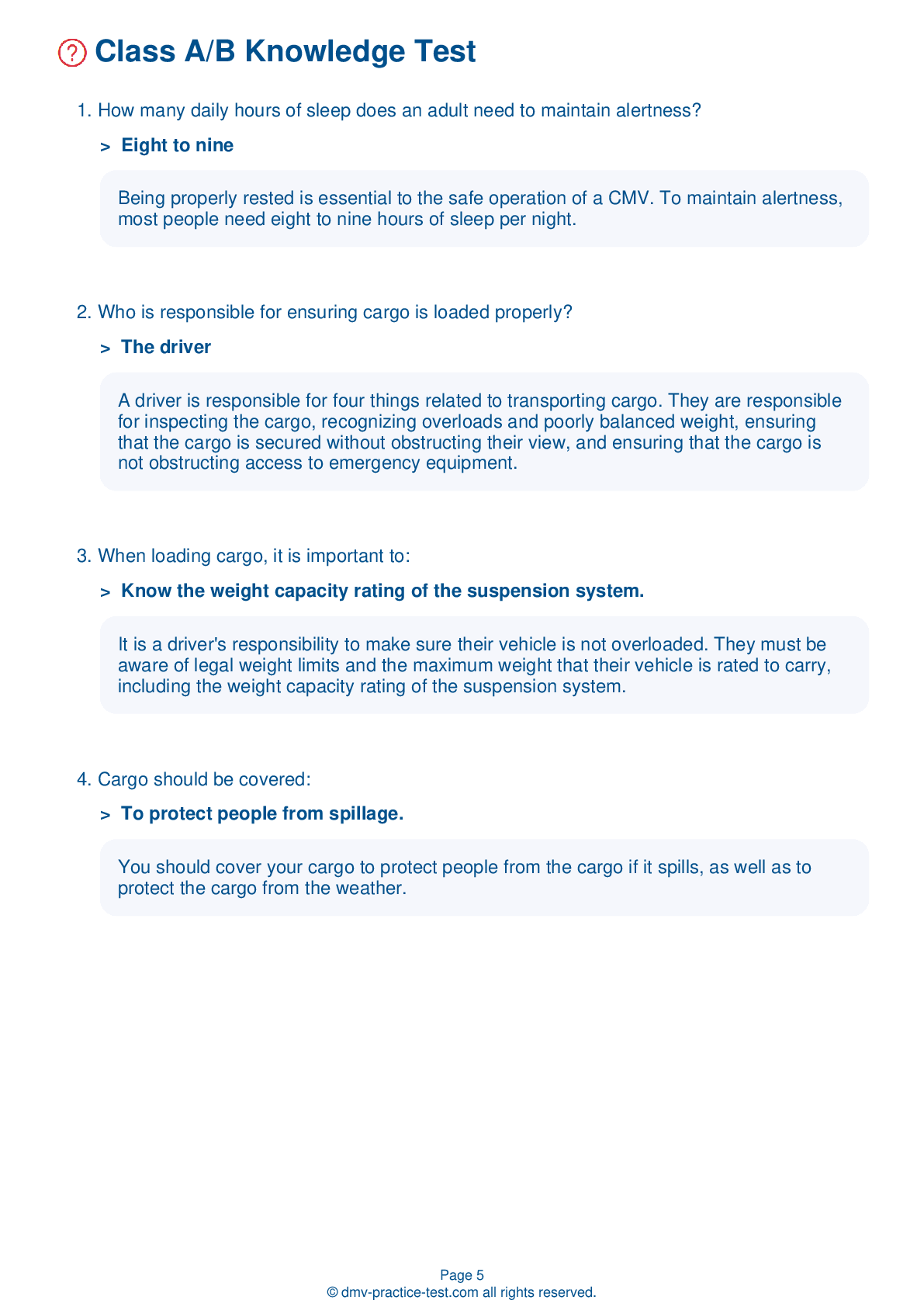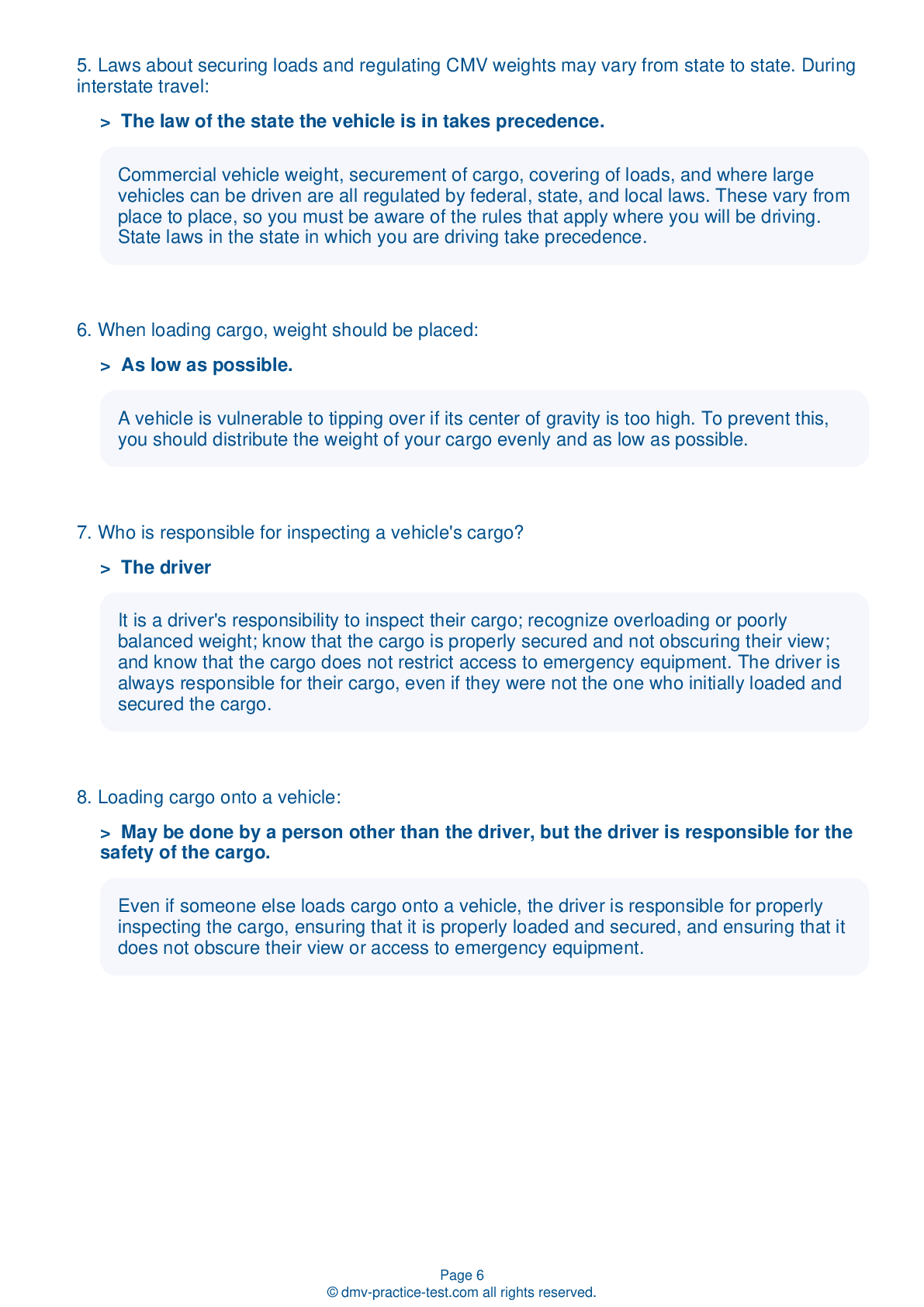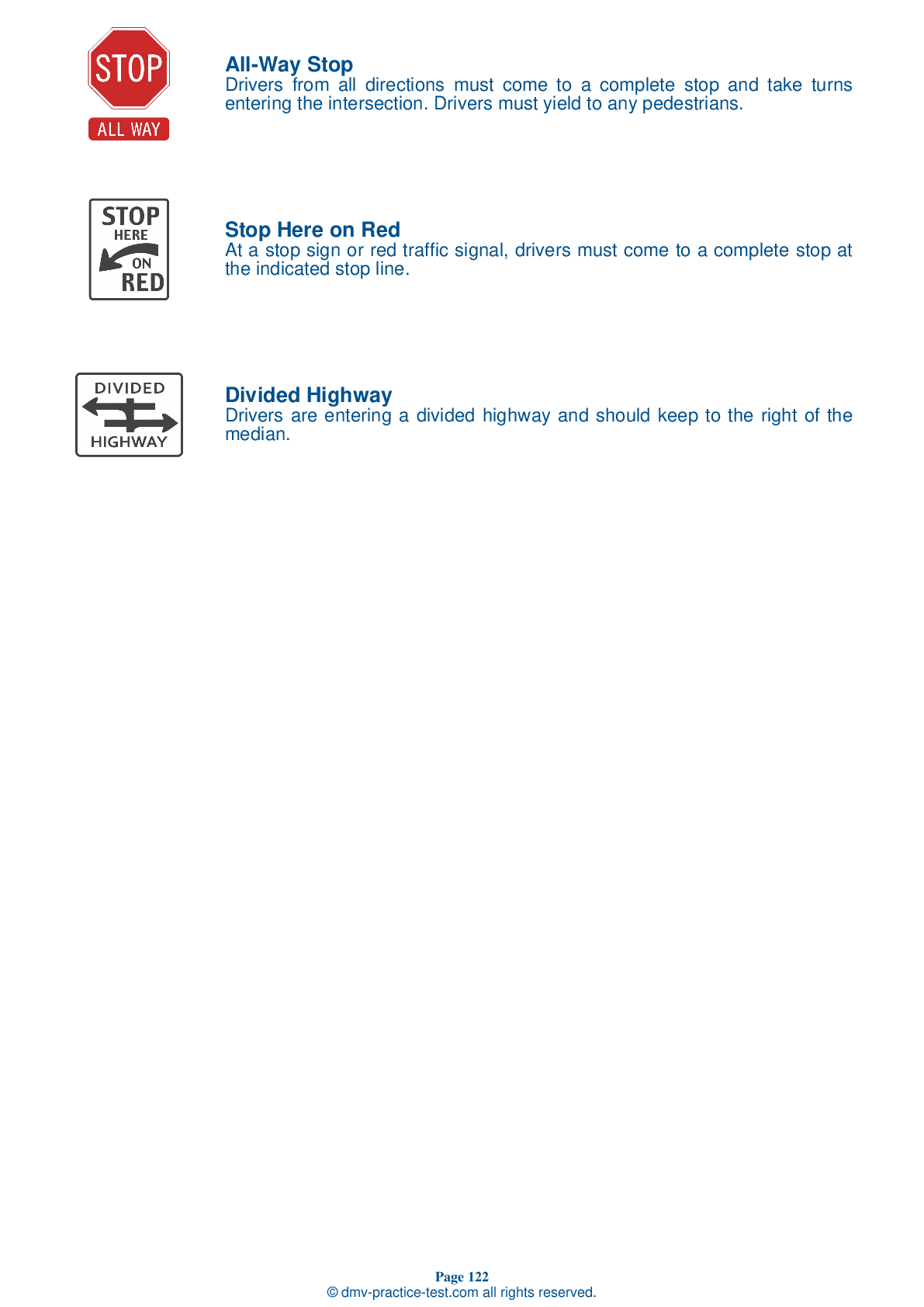Class B Driving Test | Connecticut 2025 #1
Train for FREE online with our Connecticut class B license test. The official exam test consists of several obligatory parts, with all of them checking your knowledge of different blocks of road rules. If you need to obtain a CT CDL class B permit in 2025, practice as much as possible. Free sample tests published on our website will help you check and improve your knowledge and boost your grades. Please bear in mind that CDL class B requirements may vary from state to state.
1 . When changing lanes:
Always use your turn signals and check your mirrors when changing lanes.
2 . Emergency equipment in a vehicle is:
During a pre-trip inspection, you should check for emergency equipment, including spare electrical fuses; three red reflective triangles, six fuses, or three liquid burning flares; and at least one properly charged and rated fire extinguisher.
3 . During a basic vehicle control skills test, what is considered an encroachment?
An encroachment during the basic vehicle control skills test is when an exercise boundary line is touched or crossed by any portion of the applicant's vehicle. Every encroachment will be counted as an error.
4 . During the basic control skills test, you will receive points if you:
The examiner will score the number of times your vehicle touches or crosses an exercise boundary line. Each encroachment will count as an error, resulting in points against your skills test score.
5 . A low air pressure warning signal should activate:
In an air brake system, a low air pressure warning signal must come on if air pressure in the tanks falls below 60 psi. This warning signal may come in the form of a light, a buzzer, or a wig wag.
6 . What is another name for front end header boards?
Front-end header boards, also known as "headache racks," protect the driver from cargo moving in the event of a crash or emergency stop.
7 . When driving with covered cargo, a cover that flaps:
Cargo covers should not flap in the wind. They could tear loose, not only uncovering the cargo but also blocking the views of drivers.
See the exact questions that will be on the 2025 Connecticut DMV exam.
99.2% of people who use the cheat sheet pass the FIRST TIME
Lillian MCcranie explains how our CDL study guide was helpful in passing the exam and recommends it to everyone.
Cameron tells us how he purchased the CDL exam, and found it to be a useful tool which helped him pass the exam and find a job.



